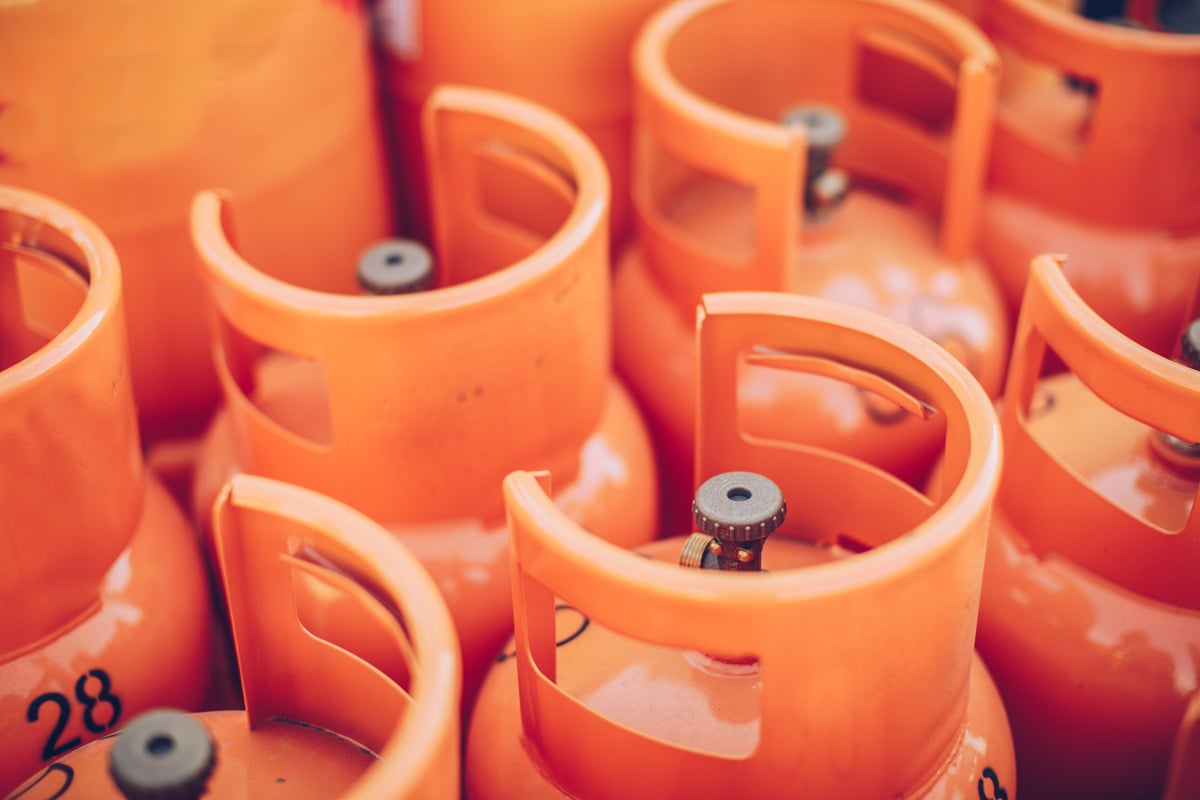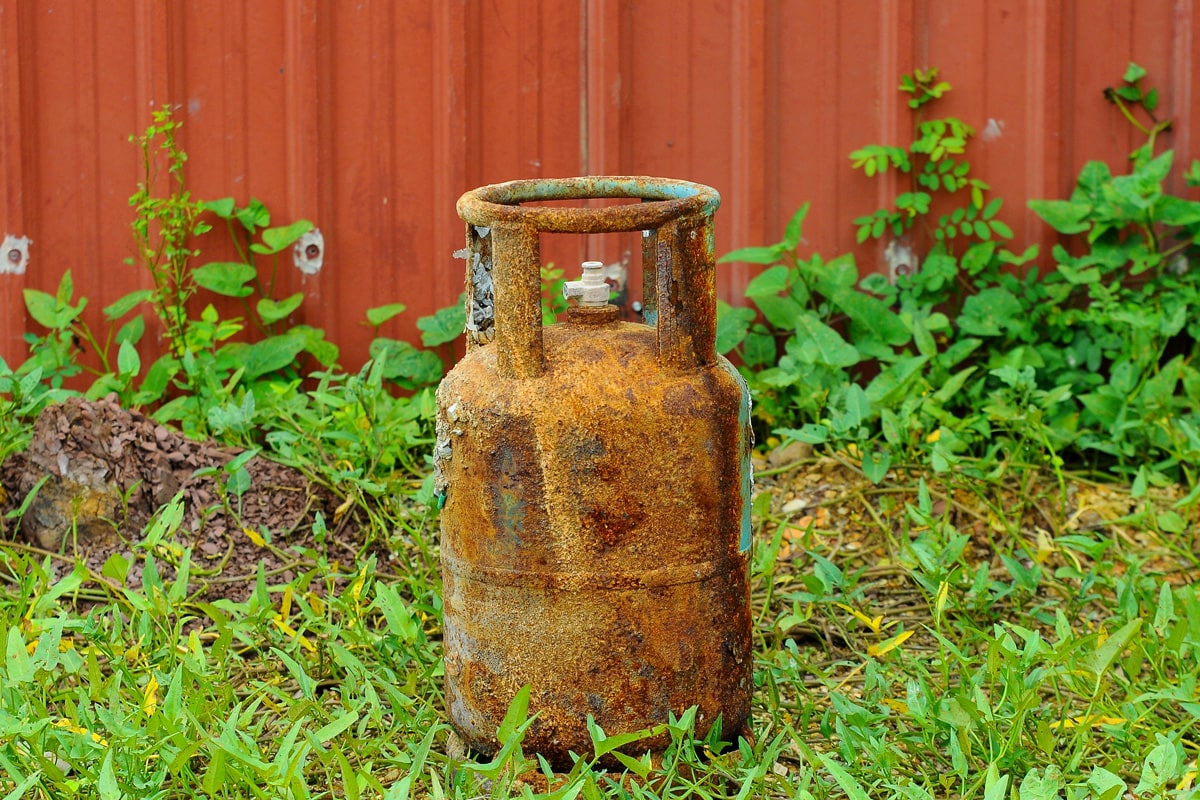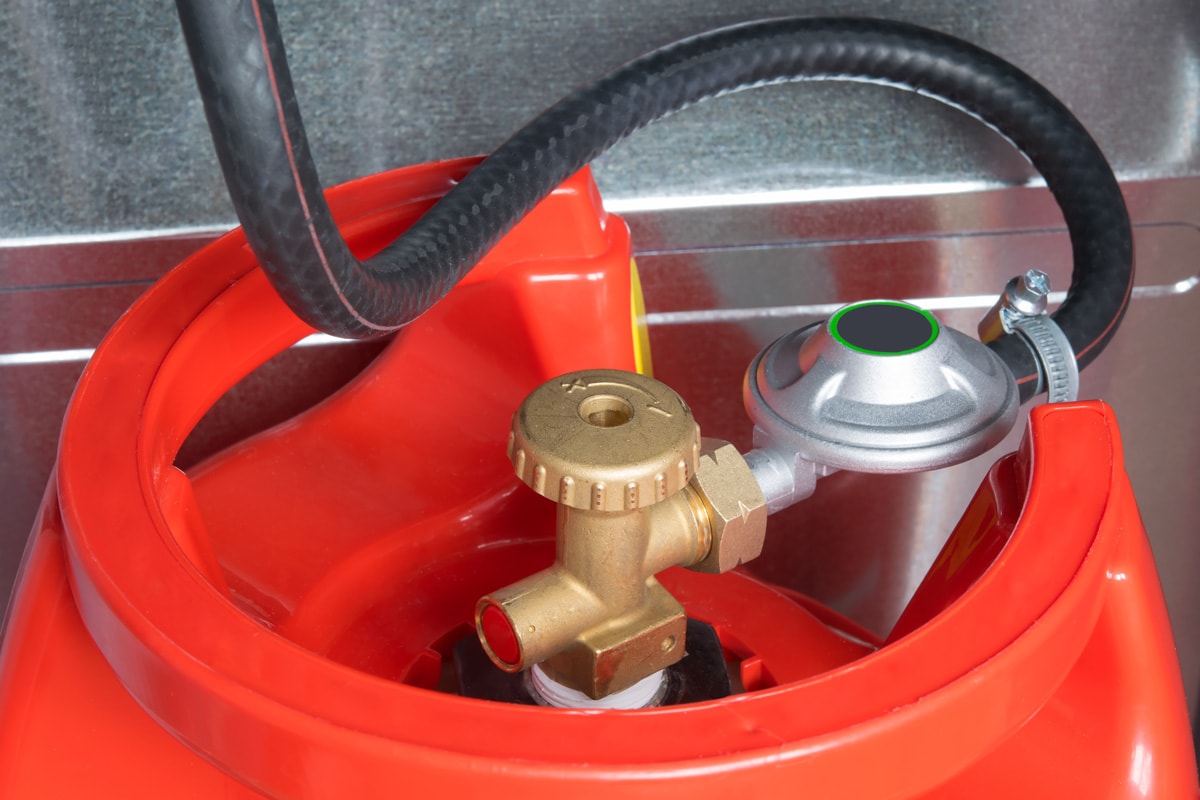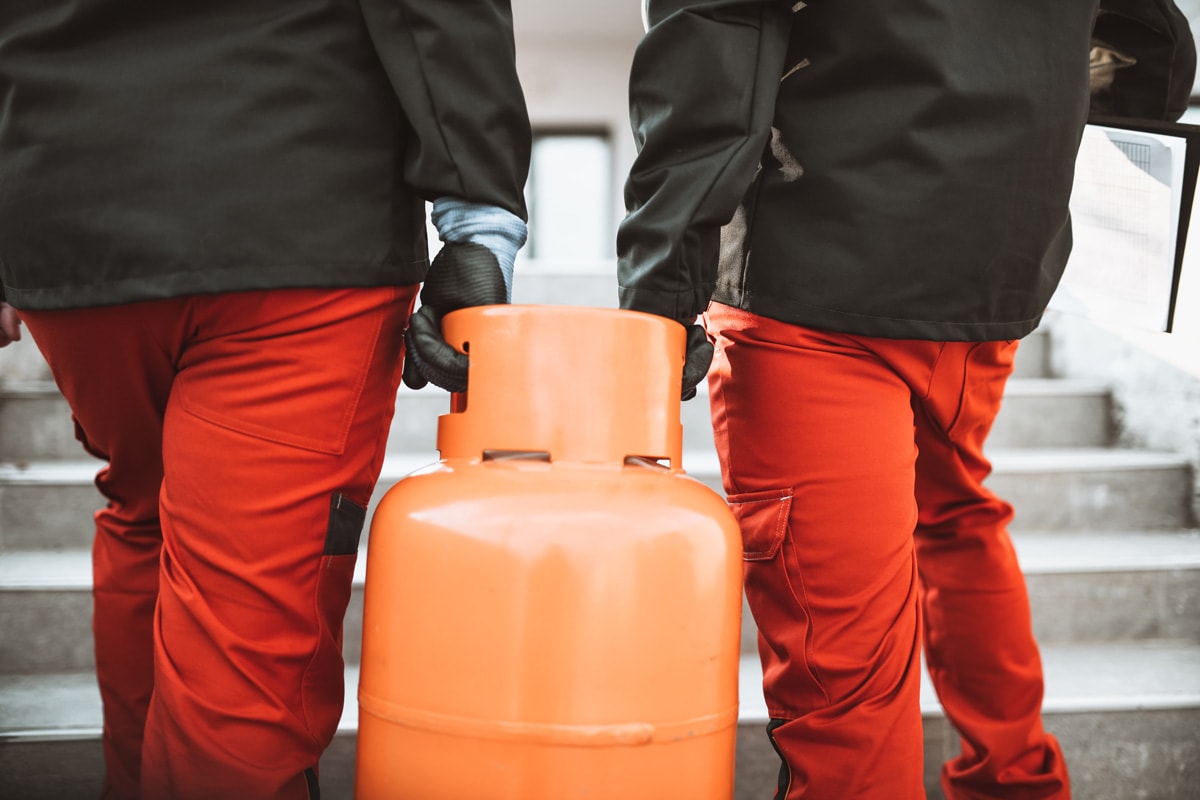Purging a propane tank is necessary, especially for a brand new tank, to safely and properly refill. So how do purge a propane tank? We researched this for you, and here's the safe, step-by-step method you can follow.
We'd highly recommend you seek the services of a professional to purge a propane tank. However, you can carefully and safely do the job yourself, following the step-by-step guide below:
- Keep the tank away from any potential spark(s) or open flame(s) as propane is flammable.
- Connect your new tank to the other tank full of propane gas using a hose specifically rated for propane use.
- Ensure that the line connecting both tanks has a regulator and bleed port valve.
- Now switch the valve to the "purge" sign and open your new propane tank valve by turning it counterclockwise.
- Proceed to the tank with gas, open it, and then switch the valve line to the "charge" sign.
- In this step, you need to ensure that there's no gas flowing in the line. Otherwise, wait until the gas has fully stopped flowing. If so, switch the valve line in your tank with gas to the "purge" sign to start the bleeding cycle.
- To ensure that your brand new propane tank is empty, you can repeat the bleeding cycle as necessary.
Stay with us! There's tons of vital information relevant to securing your safety while doing this job. We've shared below the importance of purging and its consequences if you fail to do it. So continue reading!
Why Do You Need To Purge A Propane Tank?
A new propane tank requires extreme caution, especially during transport, because it has a certain amount of air pressure. The air pressure inside the tank could be as high as 100 PSI of moisture and other air pollutants.
Thus, you should purge or empty the tank before filling it with propane. This is to maintain an even pressure when traveling through different altitudes.
According to experts, there are two main reasons why purging a propane tank is necessary. This includes the following:
Avoid Improper Combustible Mixture
This helps to prevent mixing the air and propane gas inside the cylinder. If air and propane gas mix altogether, it can result in the cylinder valve emitting an improper combustible mixture.
As you might not know, the right combustible mixture of propane gas and the air is critical. This is the key to keeping your propane tank consistently delivering safe, usable fuel to your gas appliances.
The right combustible mixture of propane and air is between 2.15% and 9.6%. A slight amount of ratio deficiency will result in improper or unhealthy carbon monoxide emissions.
Therefore, it is essential to purge the propane tank before refilling and using it.
Helps To Preserve Your Tanks Odorant Liquid

Each propane tank has an odorous liquid in addition to propane gas inside the tank. It is an important substance that acts as a safety measure to detect leaking gas. Propane without this additive is odorless, meaning a leak might not be detected without it.
Purging the propane tank prevents the odorant substance from fading.
What Happens If You Don't Purge A Propane Tank?

Brand new propane tanks usually contain air to compensate for pressure fluctuations that occur during transportation. Failing to purge your propane tank before use will cause several issues.
One common problem you could face is if you refill your propane tank without purging it, chances are it will not be correctly filled to its ideal level.
Additionally, tanks without undergoing a purging process will eventually lead the air inside to create iron oxide particles. Over time, the iron oxide will certainly form rust in the tank and could also freeze up your regulator.
Another issue you'll surely encounter is the odor addivite rapidly facint inside the tank. This makes it hard for you to detect a leaking issue since you wouldn't be able to smell it.
Can I Use A Liquid Propane To Purge My Propane Tank?
Don't ever try to use liquid propane to perform a purging process on your propane tank. There is nothing beneficial you'll get by using liquid propane. Aside from it can only discharge about 25% of air when you utilize liquid propane.
This will force the liquid propane flashes into vapor and stays in the body of the tank. The liquid propane is extremely cold; its freezing point can reach about -306.4°F. Doing so will lead the propane tank to instantly ice up leaving it unusable.
What Type Hose For Purging A Propane Tank?

Use only hoses that are rated for propane usage along with their vital components. Assuring that you're using an appropriate hose will reduce problems and simplify the purging process.
A report shows that some propane adaptor hoses aren't that reliable due to a high risk of a fire hazard when malfunctioning. So be cautious about that.
Buy this rated propane hose with a valve on Amazon.
When To Purge My A Used Propane Tank?
Purging a propane tank is essential in all brand new propane tanks. But for an already-used propane tank, it's not always necessary.
The principle of purging your propane tank is to suck out any air pressure that is present inside the tank. Now if there is pressure inside the tank, it is normal for the tank to not produce clean gas during operation.
![Two workers carrying a propane tank, How To Purge A Propane Tank [Step By Step Guide To Empty It Safely]](https://hvacseer.com/wp-content/uploads/2022/11/How-To-Purge-A-Propane-Tank-Step-By-Step-Guide-To-Empty-It-Safely-2.png)
If you notice the following signs, you can conclude that it is time to purge your propane tank:
- If the flame turns orange instead of blue in your gas stove, grill, or in any portable gas appliances.
- For RV propane tanks: If the RV's furnace always fails to ignite, then it's time to purge your tank.
How Long Does It Take To Purge A Propane Tank?
This will always depend on the level of air pressure inside the propane tank. You must also consider the tank size to determine how long the purging process will last. Nonetheless, a normal purging cycle may take up a time between 30 seconds to 10 minutes.
How Many Cycles Before You Stop The Purging Process?
The rule of thumb when purging your propane tank is around three to four cycles. Ideally, if you no longer hear gas flowing in the hose line from both tanks. Then it is safe to assume that you can stop the purging cycles knowing that it is empty.
What To Do When There's A Propane Gas Leak?
A propane leak could result in a real disaster. Every purging task has its risk, especially if you lack the experience and knowledge to do so.

Here are our safety guidelines you can follow when you detect a propane leak:
- Immediately switch "off" both tanks that you're using in your purging procedure.
- Secure the area from exposure to any heat or sparks.
- Never attempt to switch on any of your lighting fixtures or even press the doorbell. Remember that propane is highly sensitive to sparks.
- Also, don't adjust your home thermostat for the moment unless the leaking is finally controlled.
- Immediately, get your phone and leave the area before calling 911 or any responsible authorities.
Warning! If you aren't that capable of purging your propane tank. We highly suggest calling a professional and letting them purge your propane tank! This is the only way to ensure your safety and not resort to these guidelines.
To Wrap Things Up

The overall procedure of purging your propane tank is easy as long you have the knowledge and skills to perform the job. You cannot take it lightly since the purging process involves a highly flammable substance.
Thus, we strongly advise doing it with an expert to avoid any serious problems to occur. Unless you're indeed capable to do it then otherwise you'll be safe following all our detailed step by step information above.
If you find this article useful, please read also our other informative posts below:
Patio Heater Propane Tank Freezing—What To Do?
My Propane Tank Feels Like There Is Liquid Inside – Is It Safe To Use?

